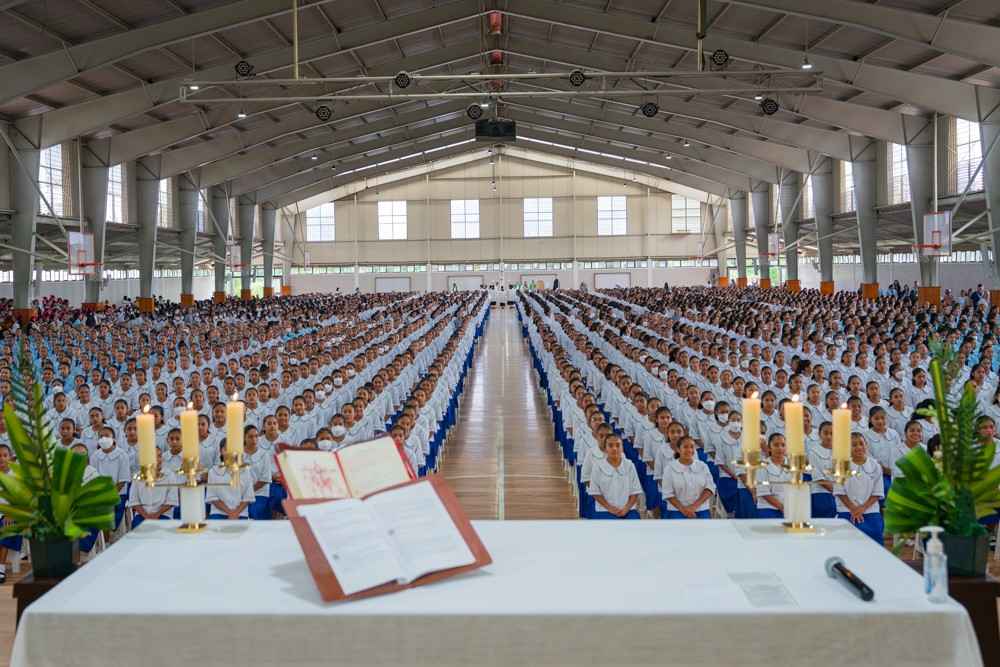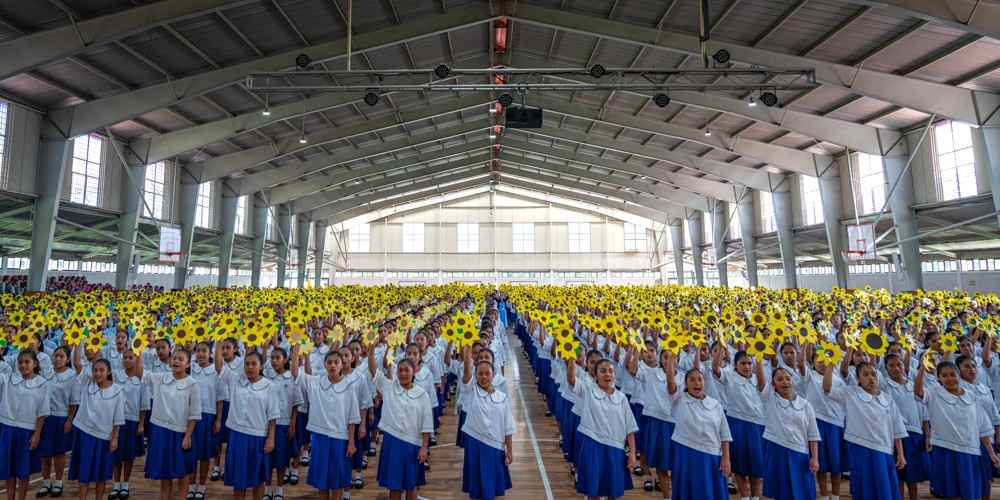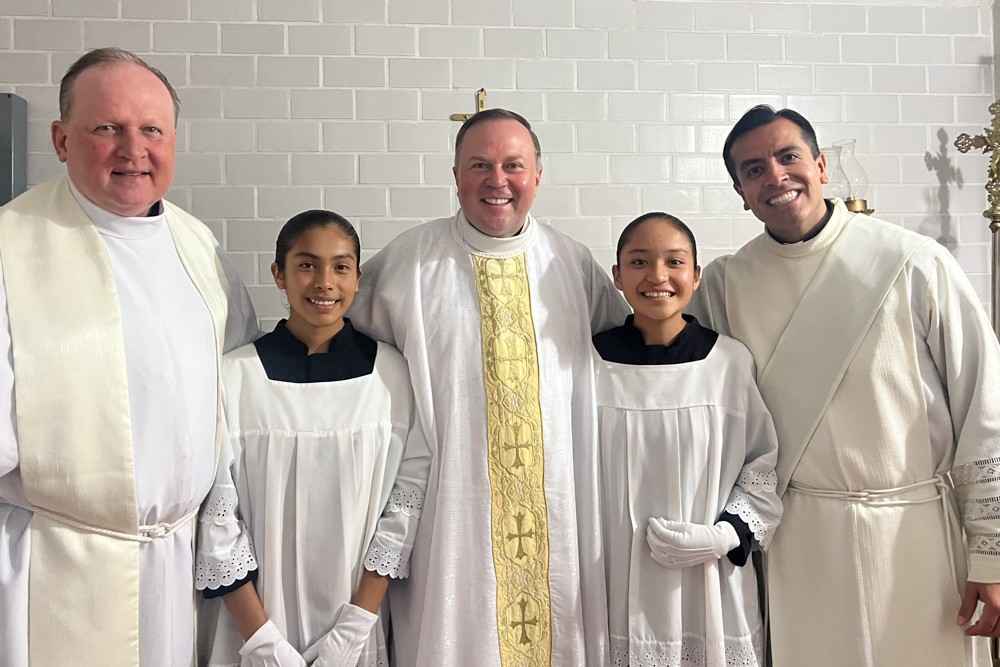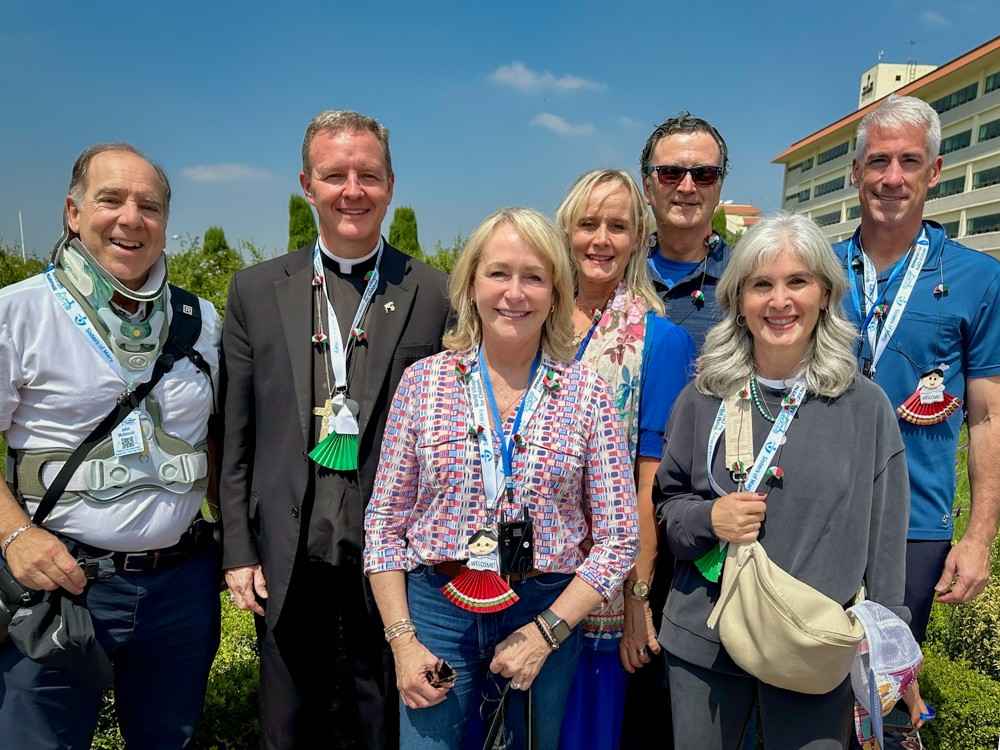Mission to Our Lady of Guadalupe & Her Daughters
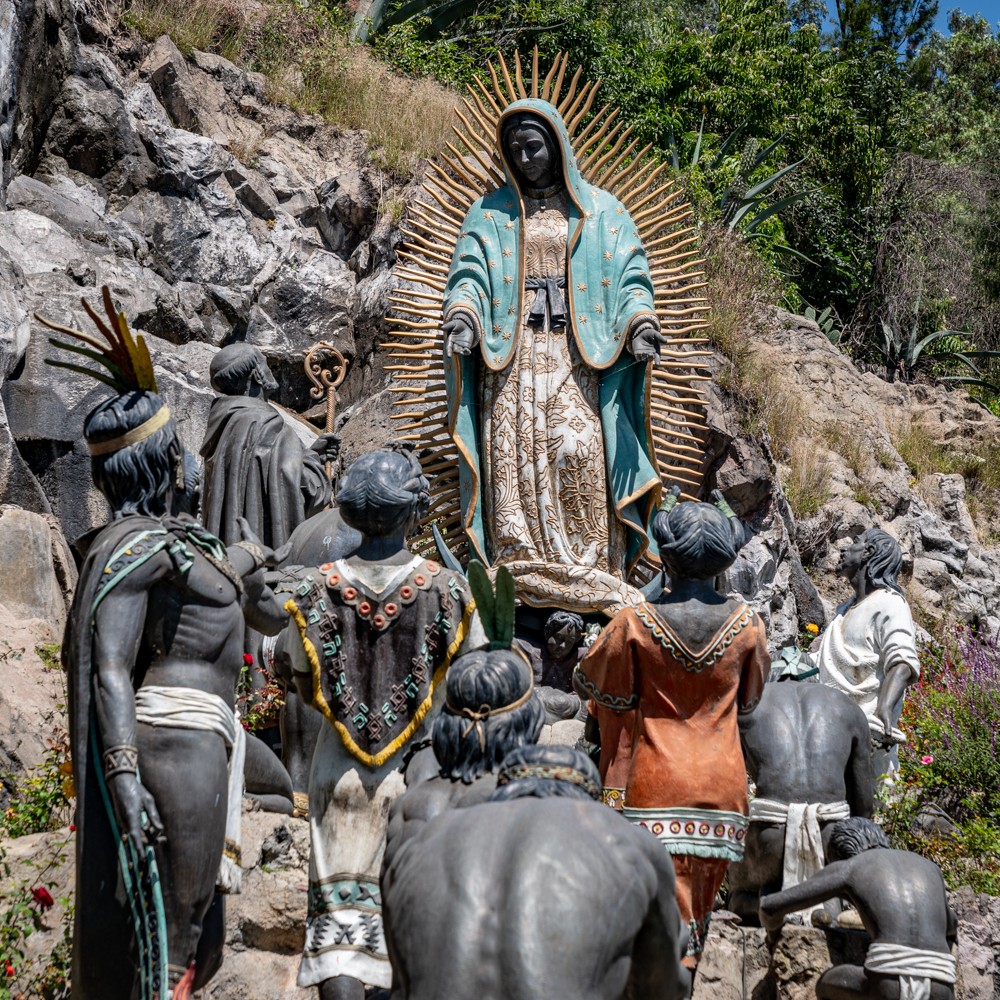
In September, members of the Jacksonville Region ventured to Mexico City, where they toured the Shrine of Our Lady of Guadalupe and visited the Sisters of Mary World Villages for Children Girlstown School in Chalco.
The Jacksonville members visited the shrine and Tepeyac, the most visited Catholic site in the world, accompanied by Bishop Erik Pohlmeier of the Diocese of St. Augustine, Conventual Chaplain ad honorem; the Rev. Remek Blazkowski, Associate Chaplain; and representatives of the World Villages for Children, led by Colleen Sullivan Opack, its COO. After touring the New Basilica and viewing the tilma, Bishop Pohlmeier celebrated Mass at the Ancient Basilica. The Grand Master also visited the site of the apparition to share in the devotion to Our Lady. In his message, the Grand Master highlighted the importance of Mexico in the Order’s mission: “The Virgin of Guadalupe unites us in faith and compassion. Through the legacy of Blessed Gerard, the Order of Malta continues to serve with love and dignity those who need it most: the sick, the poor and the displaced”.
The events at this site centuries ago led to massive conversion from a society that, in the 1500s, practiced 50,000 human sacrifices each year. In 1520, Hernán Cortés outlawed human sacrifice, stripped the Aztec temple pyramid of its idols, cleansed the stone of its blood, and erected a new altar. He ascended the 100-foot pyramid with a priest and adorned the pyramid with the Holy Cross and images of the Blessed Mother and Saint Christopher. And the priest offered the holy sacrifice of the Mass.
Not far from Tepeyac, Juan Diego, a poor peasant and a pagan, was born in 1474. He and his family were among the earliest converts to the faith through the ministry of Franciscan missionaries there. Over four days, Our Lady appeared five times. The first apparition occurred on December 9, 1531, at dawn, when Juan Diego was passing Tepeyac Hill. He saw a brilliant light and heard celestial music, and at the top of the hill, he saw the Blessed Virgin Mary. She told him she was the Virgin Mary, Mother of the true God. She desired a shrine to be built there, and told him, “Go to the dwelling of the bishop in Mexico City and make known to him my desire.” But the bishop was reluctant to believe Juan Diego. On the return trip home, the Blessed Virgin was waiting for Juan Diego at Tepeyac Hill. He told her of his failure.
On December 10th, when he returned to the bishop, the bishop requested a sign. Juan Diego could not return the next day because of a sudden and severe illness of his uncle, Juan Bernardino.
In his efforts to bring a priest to his dying uncle on December 12th, Juan Diego was again stopped by the Lady at Tepeyac Hill. She said, “It is well, littlest and dearest of my sons. Do not fear for your uncle for he is not going to die. Be assured, he is already well." The Virgin asked, “Am I not here who am your mother?” She asked Juan Diego to climb to the top of Tepeyac Hill and cut the blooming flowers he would find there. He wrapped them in his tilma (cloak), and the Lady rearranged them. When Juan Diego stood before Bishop Fray Juan de Zumarraga, he opened his tilma, and the flowers cascaded to the floor. To the astonishment of the bishop and Juan Diego, there appeared upon the coarse fabric an exquisitely colored portrait of the Blessed Virgin, just as he had previously described her. This image of Our Lady of Guadalupe presented the Catholic faith in a way that was immediately understood by the Mexico's native people. In the fifth apparition, also on December 12th, she appeared to Juan Benardino and restored him to health.
After the Jacksonville group's visit to Tepeyac, the tour proceeded to Chalco, just outside Mexico City, where more than 3,000 teenage girls call Chalco Girlstown their home—a place of safety, faith, and transformation. Here, the Sisters of Mary World Villages for Children provide free, year-round residential education, vocational training, and loving care to children who once faced poverty, abuse, or human trafficking. The Ven. Fr. Aloysius Schwartz founded the World Villages for Children and the Order of the Sisters of Mary in 1964 post-war South Korea. This ministry serves 21,000 of the world’s poorest young men and women in six countries. The Sisters of Mary were established to help children break free from the cycle of poverty through faith, education, and love. Within the walls of Chalco, the “Mother-Sisters” dedicate their lives —without pay—to nurturing each girl’s mind, body, and spirit. Students follow a full schedule of academic study, sports, prayer, and training in fields such as computer science, sewing, accounting, and culinary arts. The goal is not only to educate but to empower these young women to pursue college, meaningful work, and lives of faith and service. In unison, they say the rosary every evening at 7:00. The impact is profound, transforming the lives of the world’s poorest children at an average cost of just $1,500 per student annually. On this campus, the Sisters of Mary are also developing a fully certified nursing school.
In Chalco, we witnessed firsthand the joy, discipline, and deep faith that fill this remarkable community—a living testament to Father Al’s mission of lifting the poor from suffering and leading them toward lives of hope, dignity, and purpose. This community, and other World Villages around the world, embrace the charism of the Order of Malta, “Tuitio fidei et obsequium pauperum.”

